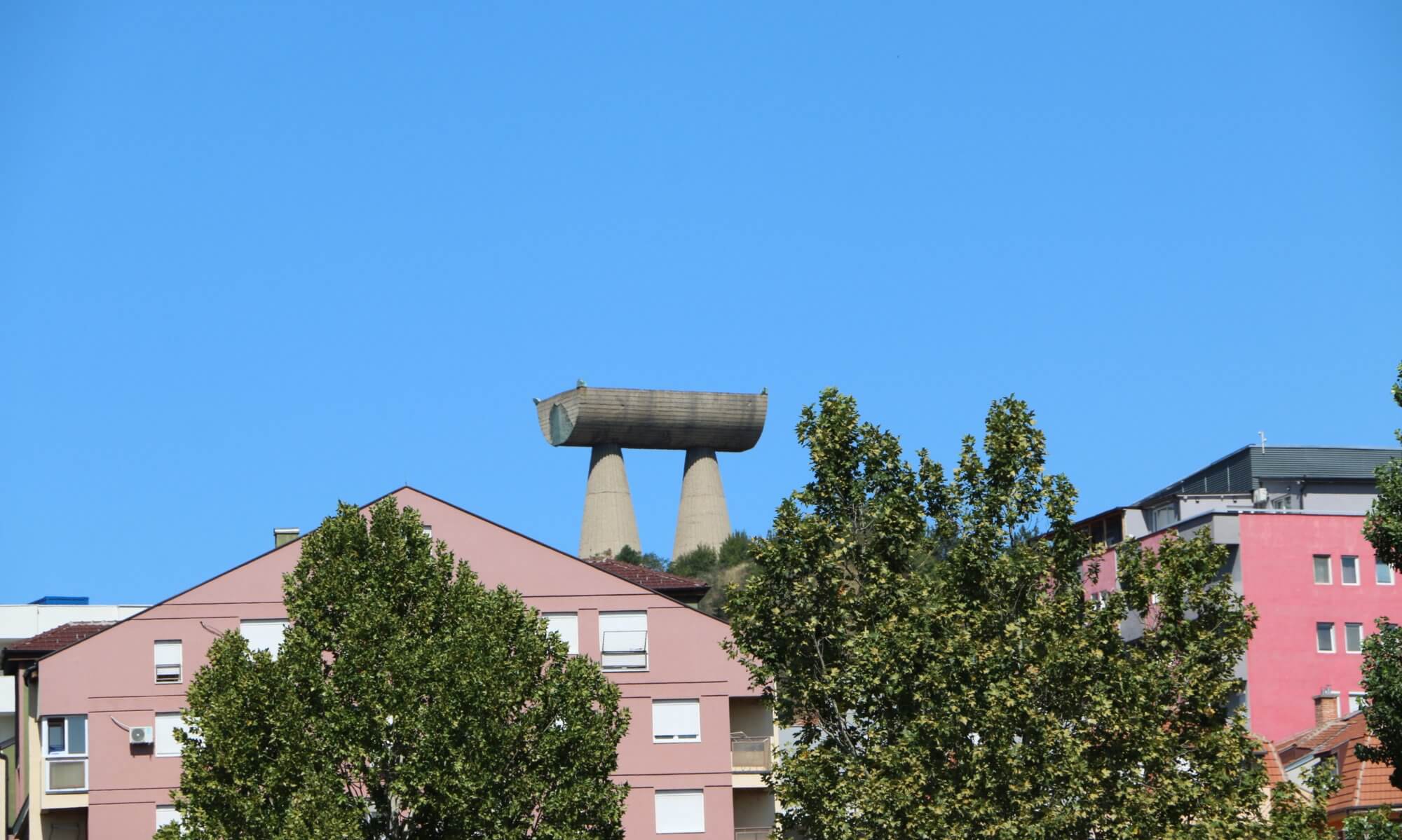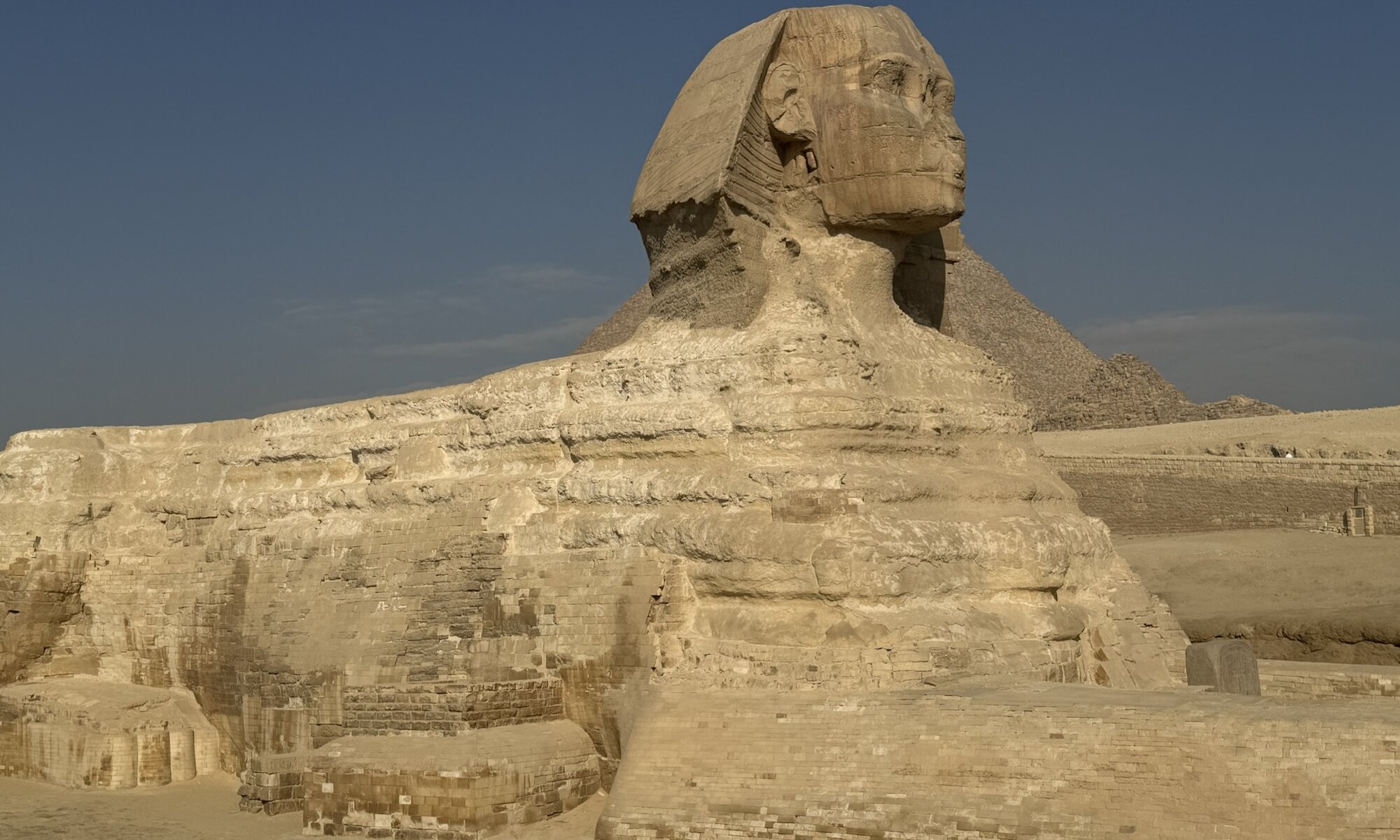The Great Sphinx of Giza, one of Egypt’s defining symbols, is believed to have been built during the reign of Pharaoh Khafre around 2500 BC. Carved directly from the limestone bedrock of the Giza Plateau, it bears the head of a pharaoh and the body of a lion, symbolising royal power and divine protection. Scholars associate the monument with Khafre’s pyramid complex, since the Sphinx faces his pyramid and shares architectural similarities with nearby temples. Some have speculated it could depict an earlier ruler such as Khufu or Djedefre, but no definitive inscriptions have ever confirmed its maker. Its original Egyptian name, Hor-em-Akhet, meant ‚Horus of the Horizon‘, a fitting symbol for its gaze towards the rising sun across the desert sands.
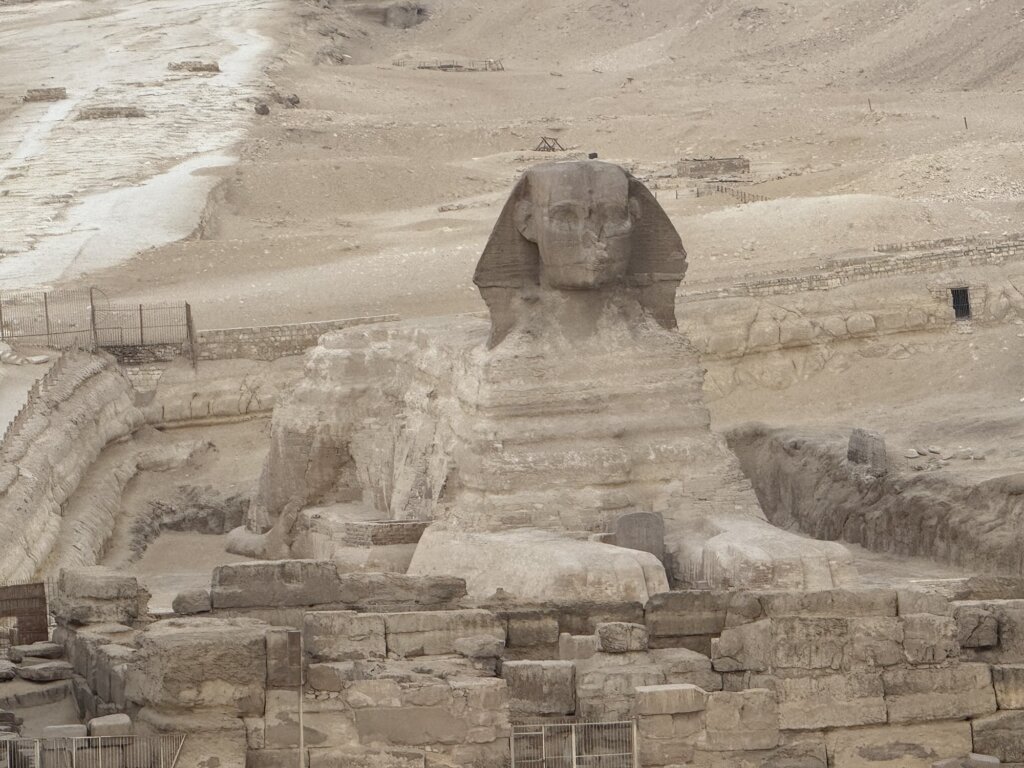
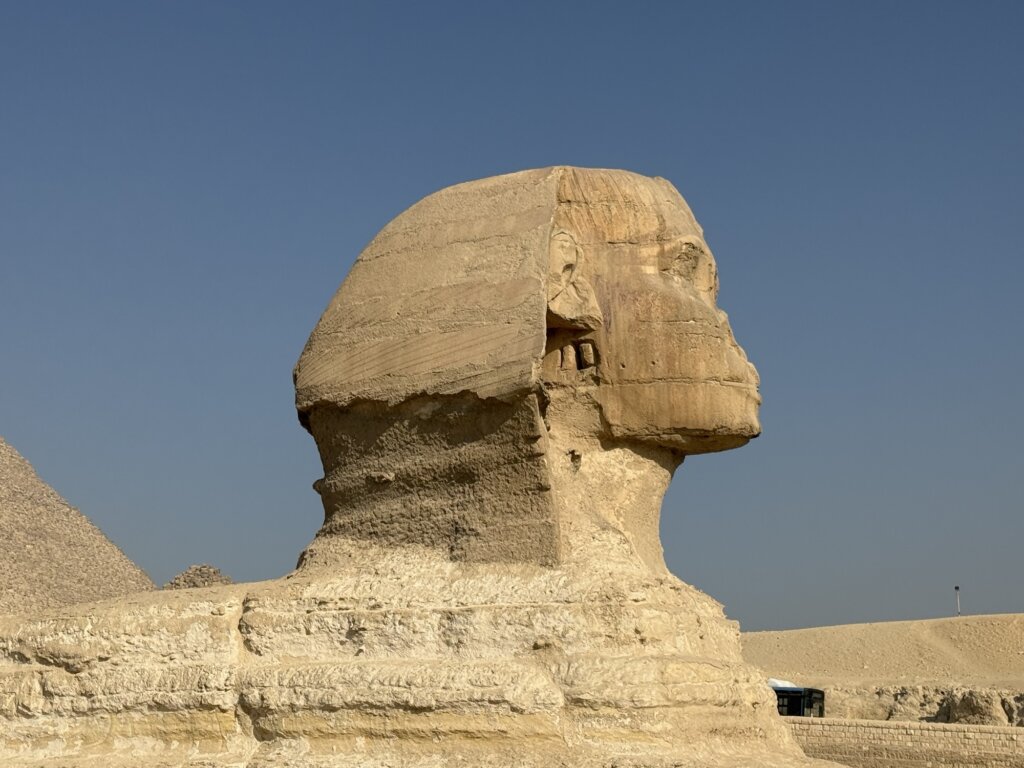
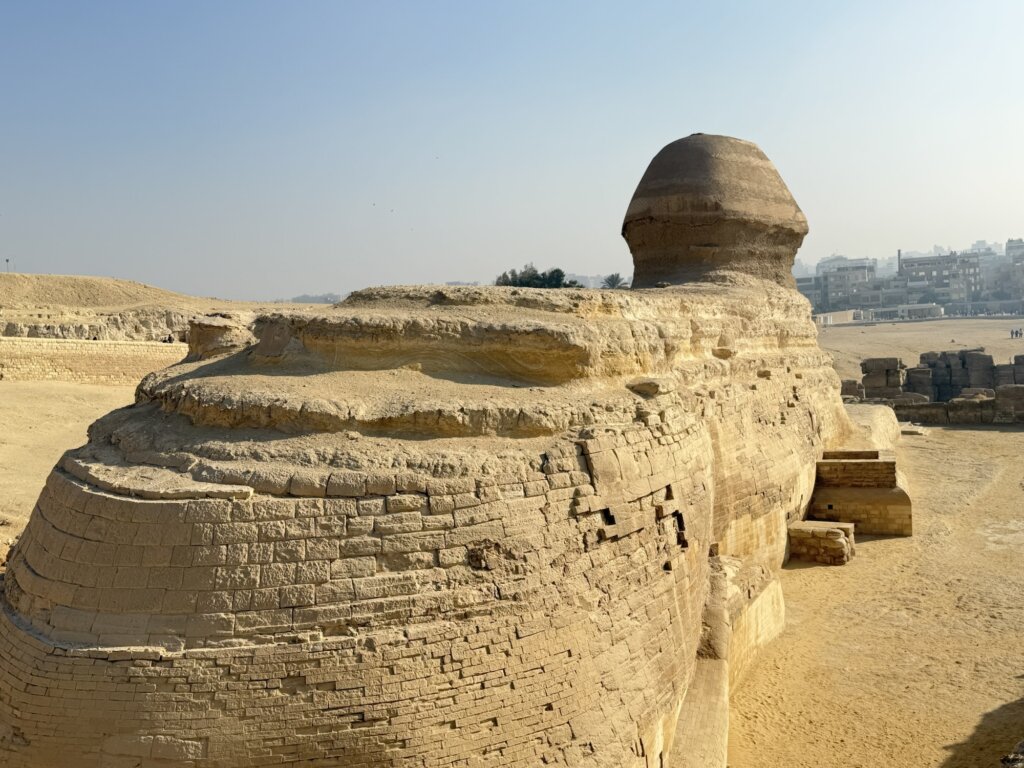
Over the centuries, the Sphinx has endured natural erosion, deliberate damage, and long periods buried under sand. During the New Kingdom, Pharaoh Thutmose IV restored the monument after rediscovering it beneath centuries of desert drift, commemorating his efforts on the Dream Stele still standing between its massive paws. Later, in Roman times, the statue became a destination for travellers and pilgrims, with stairways and viewing podiums added to facilitate visits. Yet, by the medieval period, the Sphinx had again suffered neglect, losing its prominent nose and much of its pigment, the latter likely once showing its face painted red – a reminder of the monument’s former splendour.
Today, visitors to the Sphinx encounter one of the world’s oldest and largest monolithic sculptures, standing roughly twenty metres tall and seventy-three metres long, facing east towards the dawn. The surrounding Giza Plateau has been significantly modernised, offering eco-friendly buses, shaded walkways, and new interpretation points explaining the monument’s historical and symbolic legacy. A newly opened visitor centre provides maps, exhibition spaces, and multimedia materials that connect the Sphinx’s construction with ancient Egyptian cosmology and art. Modern conservation continues to monitor the monument, balancing environmental exposure with the need for accessibility.
Standing before the Sphinx, travellers can view not only the colossal statue but also the remnants of its companion temples and the alignment with the nearby pyramids of Khufu and Khafre. The Dream Stele remains a focal point for those photographing the famous image, framed by the great pyramids beyond. Licensed guides describe the myths, restoration efforts, and astronomical significance of its eastward orientation. While entry inside the statue itself is not permitted, the close-up views from the enclosure give a powerful sense of connection to Egypt’s ancient world, where this enigmatic guardian has gazed upon both the rising sun and the flow of human civilisations for nearly five millennia.
Great Sphinx
الجيزة
Egypt
Loading map...

